After 5 years of use in different places, the subwoofer finally ended up in the living room of an acquaintance who was looking for some “lard for the bottom end” for his soundbar. So it’s still running. In retrospect, the purchase tip from back then was quite justified, because the part still does quite well today. However, the offer of used subwoofers of higher performance classes is quite tempting, so that you have to consider carefully to buy such a subwoofer again for this money. Good speakers are durable pieces of sound furniture, so that a second-hand purchase could also be worthwhile. Of course, this also applies to the Mivoc, which you can get used with a little luck from about 50 euros.
Original Review from 2016
One thing we want to do right away: It’s not about a self-taught 2.1 system, in which two small howler cubes are to be combined with a thick, big brother. Our intention is to use the subwoofer as discreetly and profitably as possible and to let it only play as far as necessary. If you have two good shelf boxes or near-field monitors on the computer, you are actually quite well positioned down to 70 Hz. The usual mud with frequency transitions in the upper bass and lower middle – including the well-known consequences – should be avoided; a soft but precise, acoustic base is our goal.
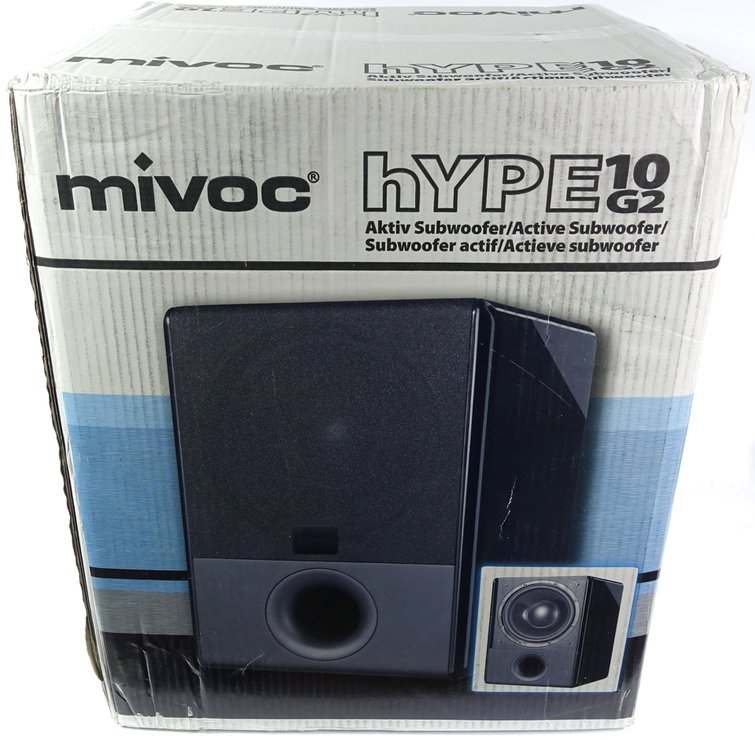
This is exactly where the Mivoc Hype 10 G2 comes into play, which with its incredibly enticing 135 Euros has not only caught our eye. Massive 17 kilos and neat external dimensions as well as a look pleasing at first glance challenge us to take a closer look at the part, which led us to an anonymous purchase. We will see later that in addition to a lot of light also various shadows exist. But always nice in turn.

The scope of delivery is of course short at this price and only a power connection cable as well as a few screw-on plastic feet with rubber insert sum complete the subwoofer in the original packaging. The holes are pre-built and screwing on is easy. Nevertheless, depending on the floor, we would advise spikes or better decoupled feet from the hi-fi accessories. For starters, however, the hard-palstic parts do it first.
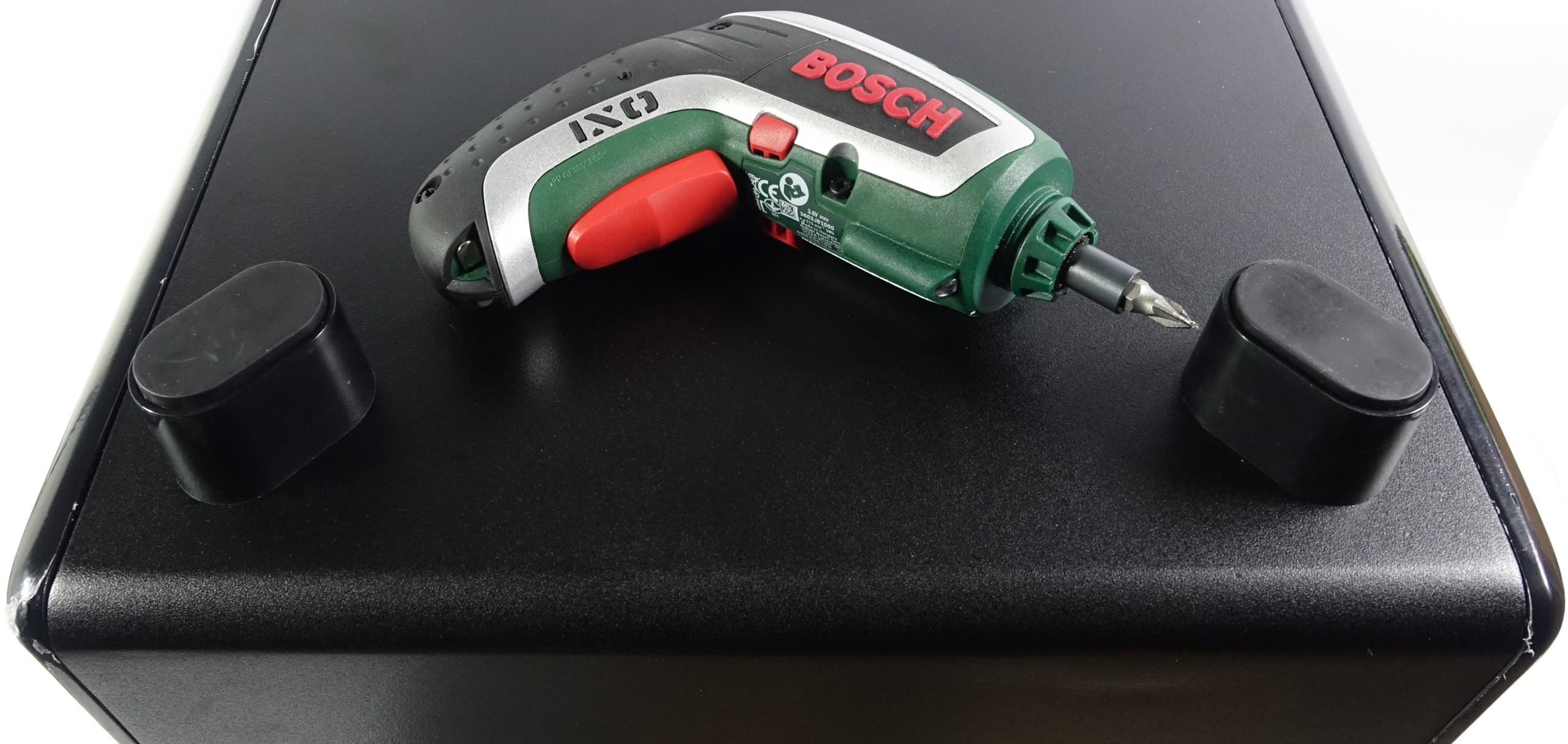
The Mivoc Hype is a typical front-fire subwoofer whose bass reflex tube is also aligned to the front. This means that it is no longer quite as sensitive as regards the installation towards the wall, but it is still worthwhile to test and optimize the location as much as possible.
Optics and haptics
At this price, of course, no manufacturer has room for optical chinkerlitzs. One has to reckon with the fact that the provider is limited to the most basic. These austerity constraints also hit the Mivoc, but almost always only at second glance. The subwoofer measures 32 cm in width, is after all a proud 44 cm high and 36 cm deep. With feet you end up with a total height of about 48 cm.
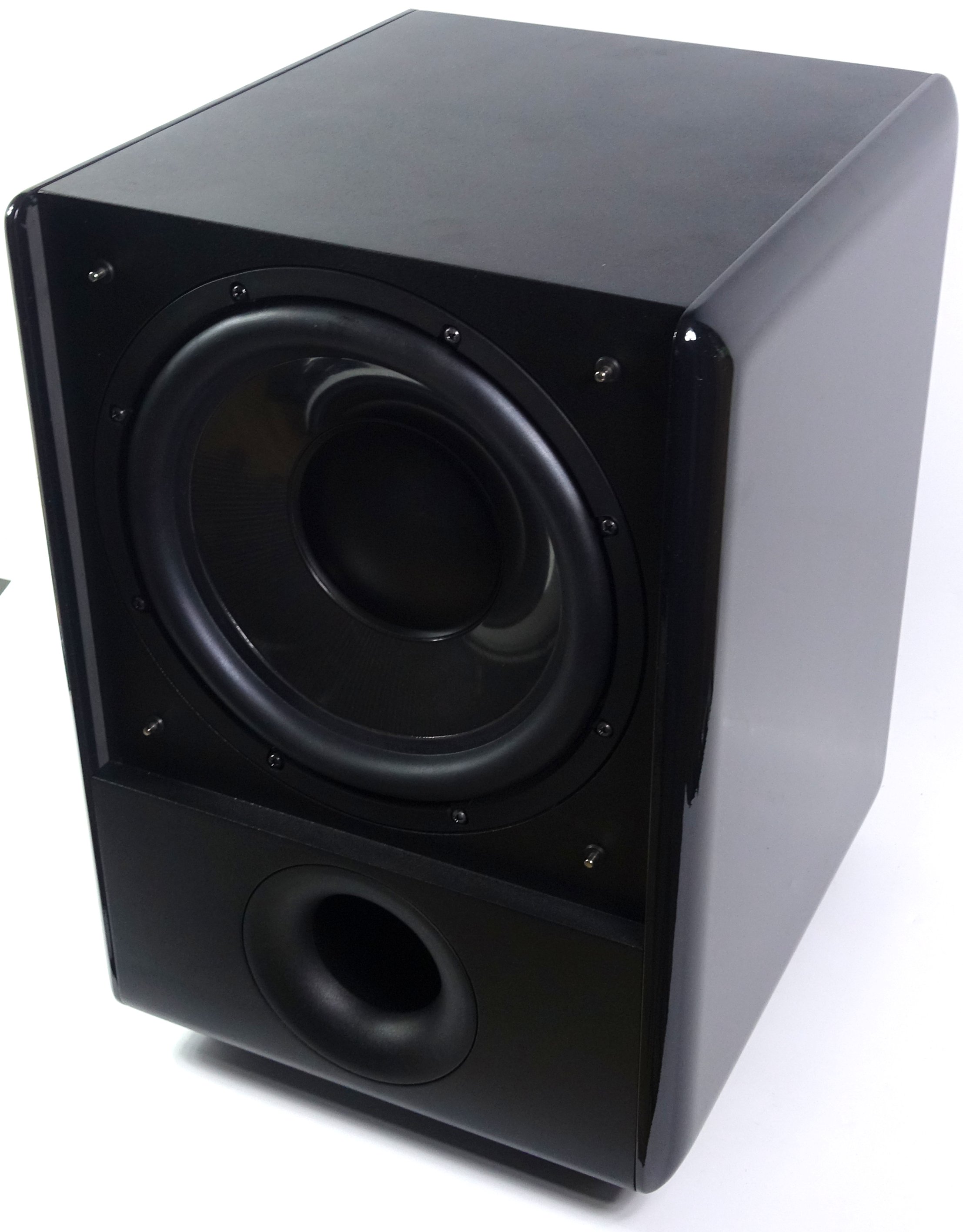 |
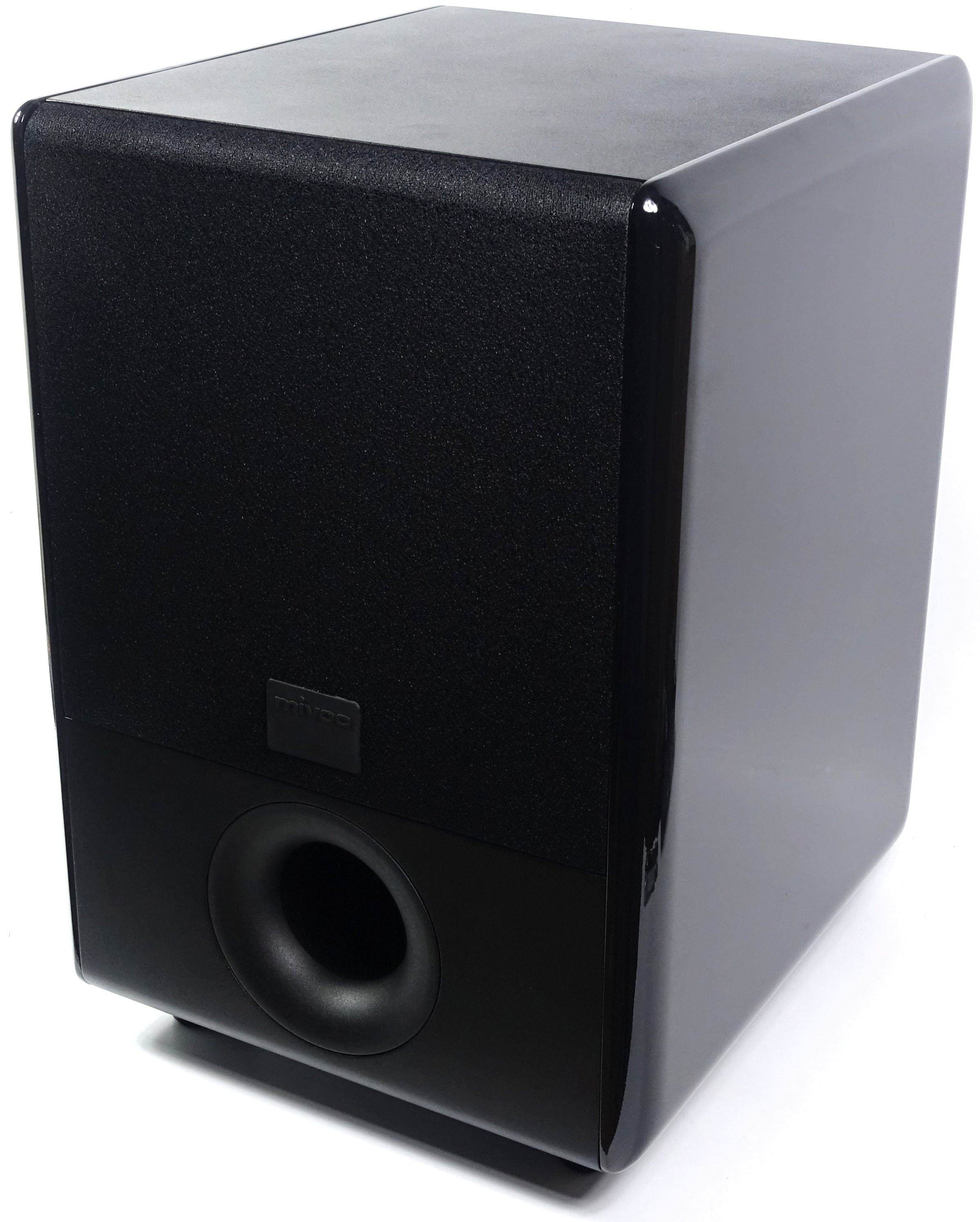 |
The almost 17 kilos weight of the subwoofer result from a rather stiff body and the inner life, which we will discuss in more detail later. Haptic everything is in the green area: the edges and corners are all pleasingly rounded and also the matt black folding of the MDF body is quite neatly solved. Only the side panels in piano lacquer look are true fingerprint cards and beg for regular room maintenance.
If you take off the frame for the speaker cover, the view of the chassis and a front that also seems acceptable, even if subtle adhesive sands and visual losses in the aesthetic appearance somewhat cloud the fun of the openness. In any case, we have closed everything again – it just looks better and more valuable. The company logo made of rubber is pure cost-down, but at least in terms of colour does not fall out of the frame.
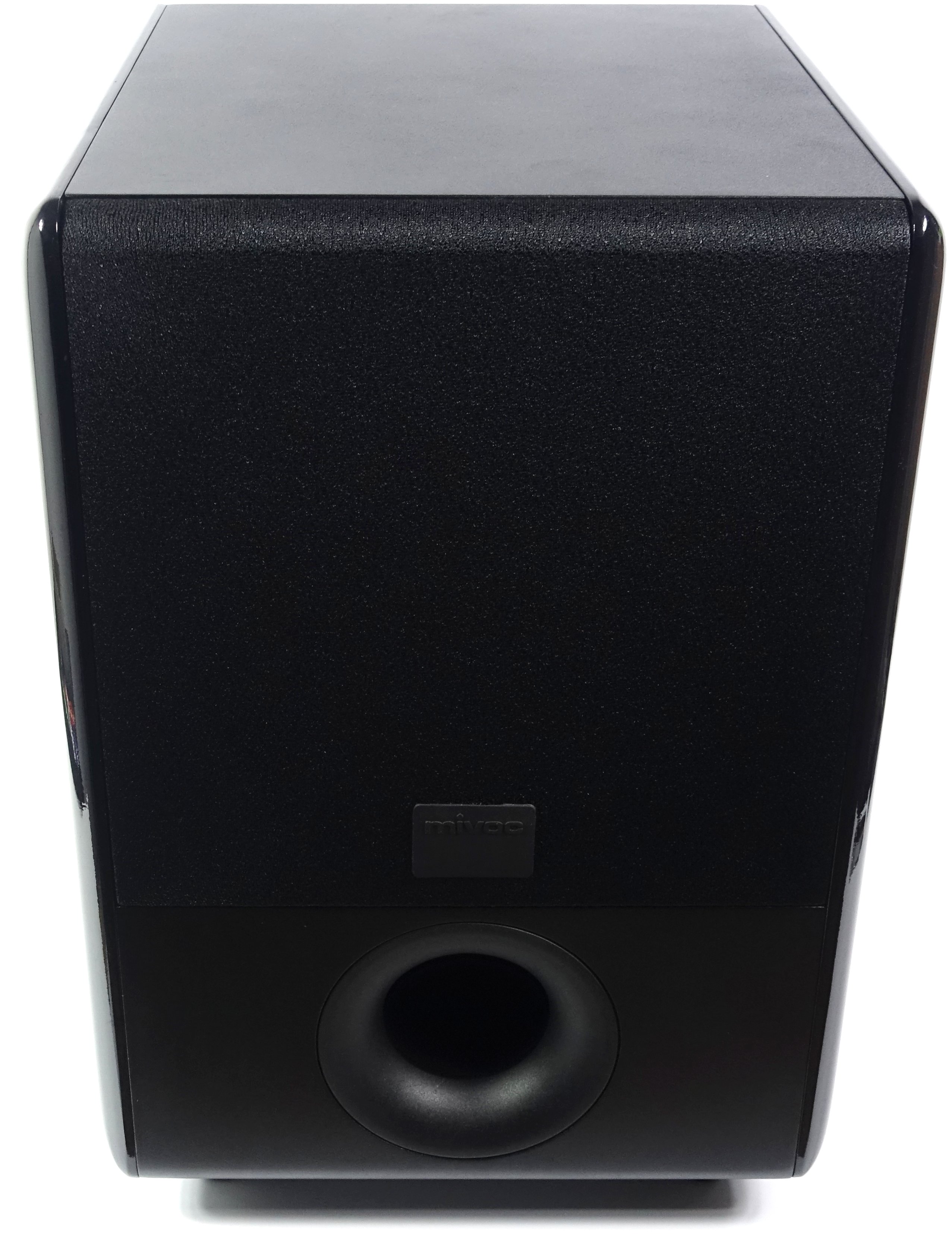 |
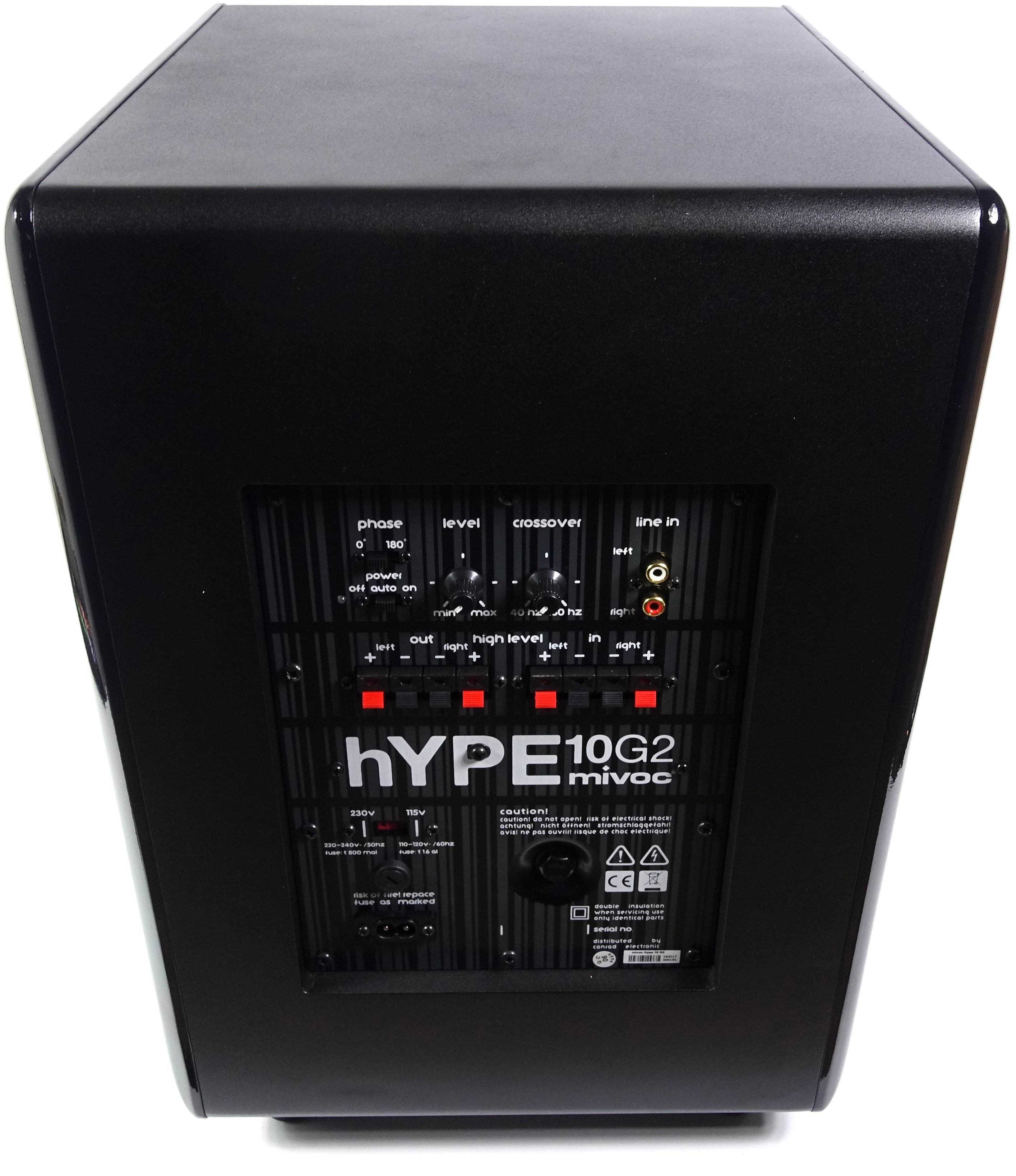 |
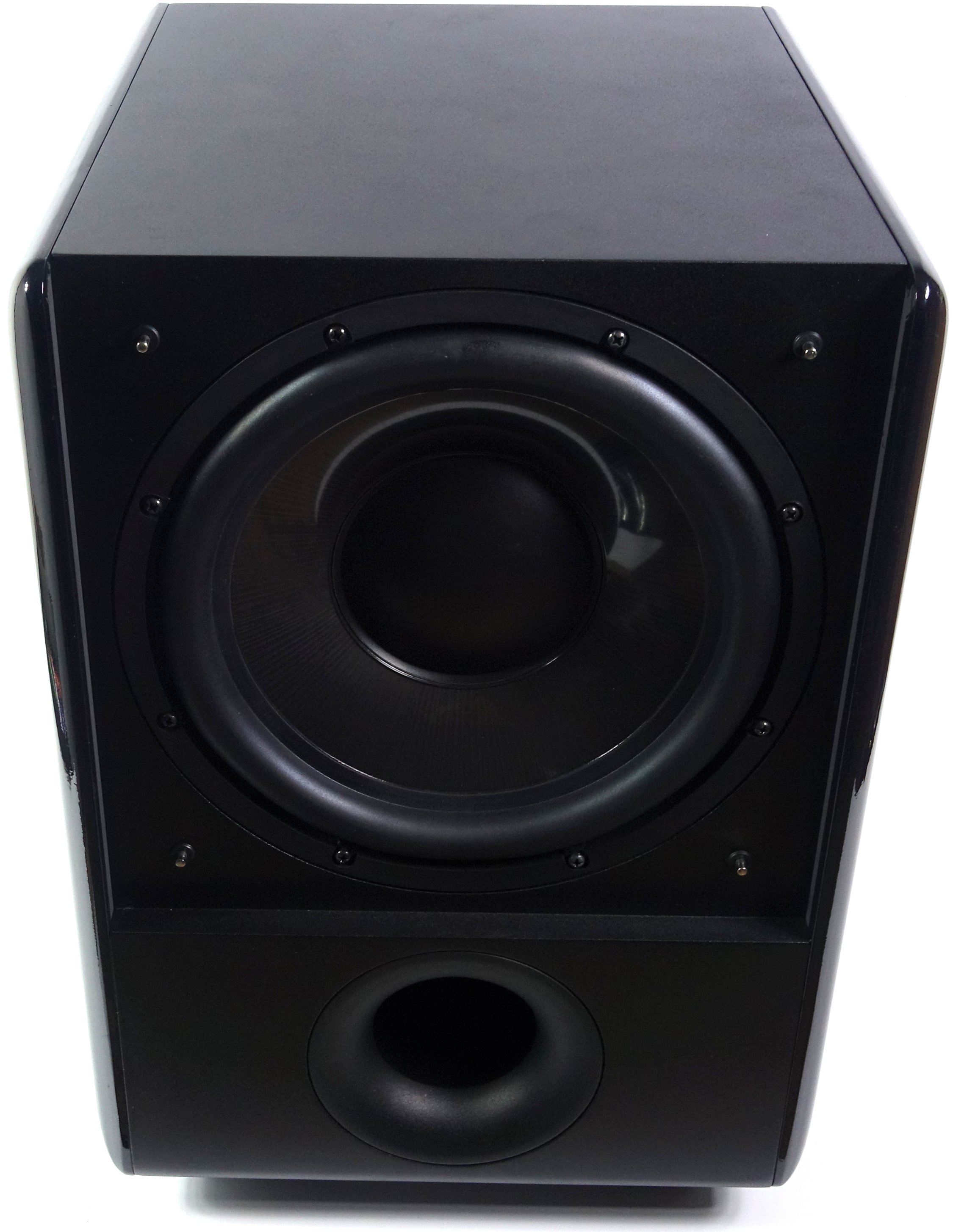 |
The connectors and controllers are located inside the mounting plate for the active part on the back of the subwoofer, which has been lightly inserted and provided with some wooden screws for ventilation. The stiffness is fine, even if you can find the places with full bass where some air escapes through the pressure inside.
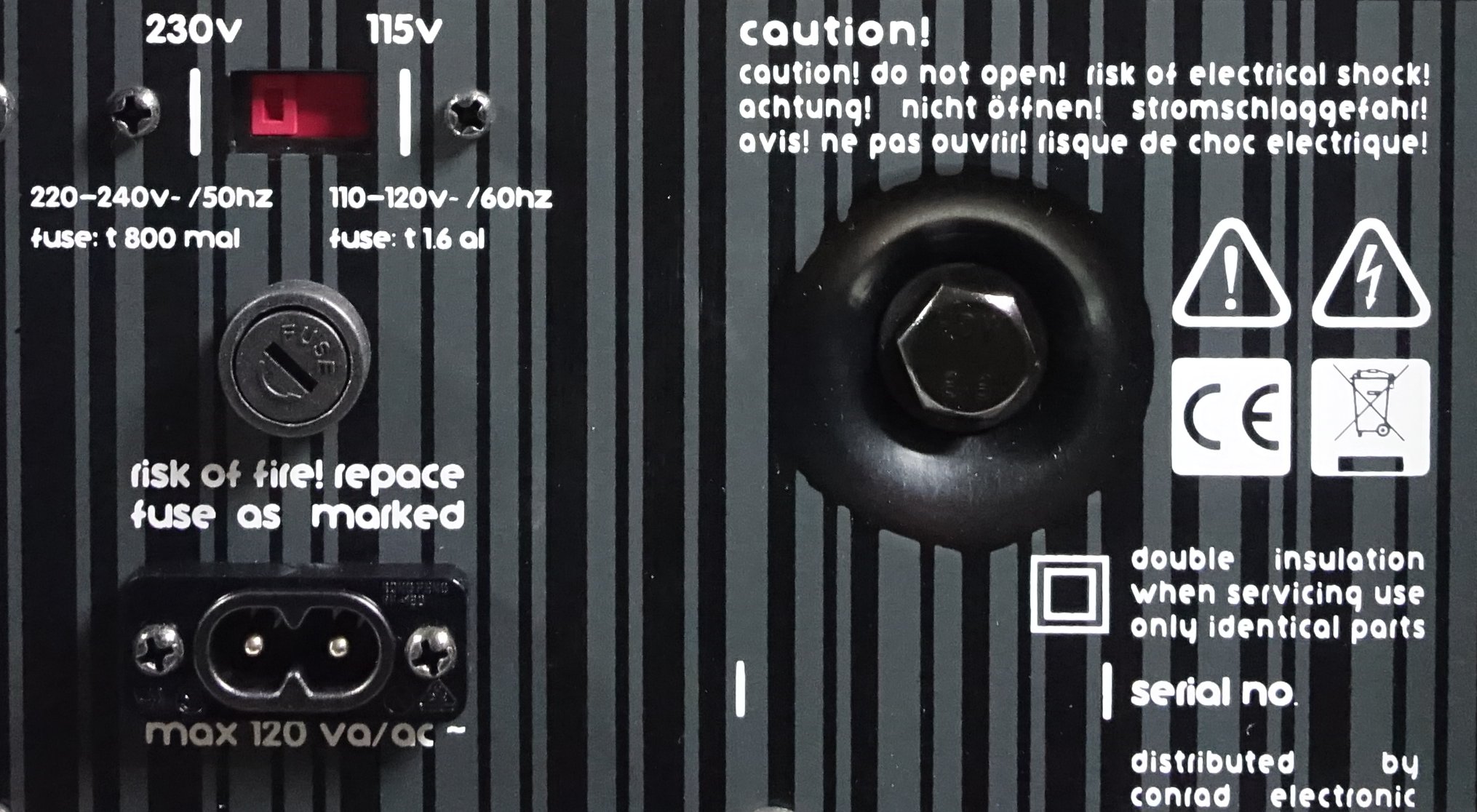
There is no real physical power switch, but only the possibility to run the device off in de facto in continuous standby. The power amplifier is electrically separated from the power supply by a relay. Of course, this technology can also be used for the automatic switch-on system, which allows the subwoofer to become active whenever a signal is present, or to force continuous operation in the third switch position.
What is rarely found with devices of this price range is the phase reversal option, with which at least a simple 180° phase shift is feasible. Depending on the hearing or location and is mainly used to correct the possibly different phase orientation to the main amplifier when using the jack input. In addition, the sensitivity (“level”) of the amplifier input and the crossover frequency can be adjusted, with something to write about the latter.

The inputs are simple but very functionally designed. In addition to the stereo jack (low-level), whose signal is converted into a monaural signal for the amplifier (a monaural signal could also be fed in from the house via only one jack), one also finds the possibility to feed the actual loudspeakers and to obtain the signal from the speaker output of the amplifier (high level).

Before we get to the bottom of the interior and thus the truth, here are the technical data, which we have supplemented with our own measurement results:
































Kommentieren